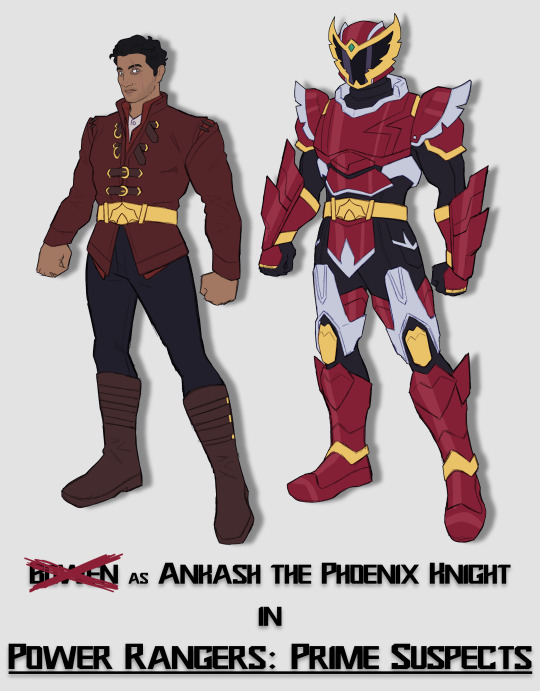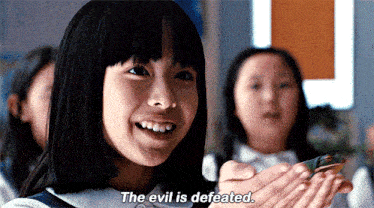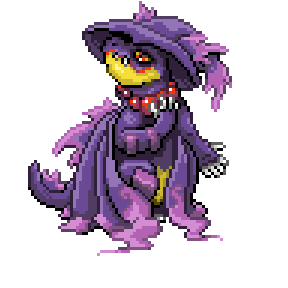#Knowledge Fusion
Explore tagged Tumblr posts
Text
qKnow Platform – A Fusion Platform of Knowledge Graph and Large Language Models
qKnow Platform is an open-source knowledge management system designed for enterprise-level applications. It deeply integrates core capabilities such as knowledge extraction, knowledge fusion, knowledge reasoning, and knowledge graph construction.
By incorporating advanced large language model (LLM) technology, the platform significantly enhances the understanding and processing of both structured and unstructured data, enabling more intelligent and efficient knowledge extraction and semantic integration.
Leveraging the powerful reasoning and expression capabilities of LLMs, qKnow empowers organizations to rapidly build high-quality, actionable knowledge graph systems—driving intelligent decision-making and business innovation.
Gitee: https://gitee.com/qiantongtech/qKnow
GitHub: https://github.com/qiantongtech/qKnow










0 notes
Note
Pink sapphire and padparadscha?
Padmaraga! I was hoping for someone to ask for her, this big ol' "bollo" is just happy to be here
(Bollo is used here as short for "bollera", a spanish slang for lesbian. Bollo also means bun)

#felt obligated to use my spanish knowledge for lesbian reasons#peppermintfreak#ask#request#pink sapphire#padparadscha#padmaraga#su#gemsona#su future#sketch#steven universe#su gemsona#suf#su art#fusion
37 notes
·
View notes
Text

Power Rangers: Prime Suspects - Bowen
Ankash the Phoenix Knight
same as ever, story stuff under the cut!!
Ever since Udonna first established Root Core, Clare has fought threats from Repulsa forces, Dark Magic users, anyone wishing to invade the last bastion of Good Magic on Earth. None so persistent as Ankash the Phoenix Knight, lifelong loyal servant of the Master. Ankash wields the Knight Saber, sword of his late mentor, Koragg, and transforms using a mysterious claw-like morpher infused with his Dark Magic. On orders from his Master, who wants to claim their power for himself to overthrow Rita's rule, he now targets this mysterious new Green and Pink Ranger pair. Intent on killing three Rangers with one blade, he backs them into a corner and forces them to seek refuge at Root Core, knowing that the Gatekeeper would never turn away someone in need. What he didn't count on, though, was these strangers' knowledge of another world. One where his life took a much different turn. A turn that may not be out of reach for him, if he just accepts the hand reached out to him.
#my art#power rangers#nick russell#pr mystic force#pr prime suspects au#so this is the result of the ''bowen was taken'' bit from clare's loree :))#initially thought to just make him koragg but then was like. nah actually yknow what leanbow would've still become koragg probably so let's#do some shenanigans. so ya he's got the dino knight morpher (with no personal knowledge of the df rangers#so he calls it his phoenix talon morpher)#leading to this koragg/void knight/mystic phoenix fusion armor#he does give up his morpher to drakkon and slayer after clare realises that he's bowen and he makes the decision to defect from the master#to root core - which does leave him powerless outside of his swordsmanship and personal magic skills - but he doesn't feel like the morpher#really ''belongs'' to him like it feels wrong in the same way that being ankash starts to feel wrong#he does also purify it - so it loses that dark magic scent and koragg's influence - in kind of a funeral thing to koragg/leanbow#bro got some stuff to talk about in therapy between never knowing his dad but kind of knowing his dad because he raised him as a evil knigh#not knowing his mum until she's an old woman pretty much on her death bed and the whole identity thing and his life being a lie and all tha#messed up. idk if he's still prophecized to be the light but if he is i may end up giving him kinda solaris knight powers#make him and clare a sun and moon duo - that'd be cute
32 notes
·
View notes
Text
It's Me!
"I'm the Lore Master, you can't question me. Matpat's not here to protect you FROM ME. That's the only reason he existed, and I finally defeated the great evil!"

But seriously I want the AU where Matthew was the only thing keeping a deranged Markiplier in check and his "retirement" has unleased the most unholy abomination upon our world.
#its like a darkiplier/ETN fusion#RIP Matthew Patrick youtube's greatest demon slayer#that or Matt was the last seal holding Mark back and it was Scott Cawthon/FNAF that finally broke him#Cawthon was determined to break Matpat he didn't consider the consequences of his actions#Didn't you know Matthew Patrick is actually a ninja with knowledge of Fūinjutsu?#the loooooreee#matthew patrick#matpat#mark fischbach#markiplier#darkiplier#youtuber egos
38 notes
·
View notes
Text
The Philosophy of Hermeneutics
The philosophy of hermeneutics is the study of interpretation, particularly of texts, language, and symbolic expressions. Hermeneutics originally developed as a method for interpreting religious scriptures, but it has expanded to encompass broader issues of understanding and meaning in various contexts, including literature, law, art, and social sciences. Central to hermeneutics is the idea that understanding is not a straightforward process but involves complex interpretive acts influenced by history, culture, and the interpreter’s perspective.
Key Themes in the Philosophy of Hermeneutics:
Origins and Development:
Biblical Hermeneutics: Hermeneutics began as the art of interpreting sacred texts, particularly the Bible. Early thinkers like Augustine and Origen developed principles for understanding scriptures, focusing on the need to uncover deeper, often allegorical, meanings.
Philosophical Hermeneutics: Over time, hermeneutics expanded beyond religious texts to include general principles of interpretation. Friedrich Schleiermacher, often considered the father of modern hermeneutics, argued that understanding any text requires insight into both the author’s intent and the broader cultural context.
Hermeneutic Circle:
Part-Whole Relationship: A central concept in hermeneutics is the "hermeneutic circle," which describes the process of understanding as a circular relationship between the whole and its parts. To understand a text (the whole), one must interpret its individual elements (the parts), but understanding each part requires an awareness of the whole.
Prejudices and Preconceptions: The hermeneutic circle also highlights that interpretation is influenced by the interpreter’s preconceptions. Understanding is thus seen as a dynamic process where initial assumptions are continually revised in light of new insights.
Key Figures in Hermeneutics:
Friedrich Schleiermacher: Schleiermacher emphasized the importance of understanding the author’s psychological context and argued for a universal approach to interpretation that could apply to any text, not just religious ones.
Wilhelm Dilthey: Dilthey extended hermeneutics into the human sciences (Geisteswissenschaften), arguing that human experience and history could only be understood through interpretive methods, contrasting with the natural sciences’ emphasis on explanation.
Hans-Georg Gadamer: Gadamer, a leading 20th-century philosopher, developed a concept known as "philosophical hermeneutics." He emphasized the role of history and tradition in shaping understanding and argued that interpretation is a dialogical process, where the interpreter engages in a conversation with the text.
Paul Ricoeur: Ricoeur introduced the idea of a "hermeneutics of suspicion," where interpretation involves uncovering hidden meanings, often related to power, ideology, or unconscious motives. He also explored the interplay between explanation and understanding in interpreting texts.
Interpretation and Meaning:
Text and Context: Hermeneutics stresses the importance of context in interpreting meaning. A text cannot be understood in isolation; it must be seen within its historical, cultural, and linguistic context. This idea is crucial in both literary criticism and legal interpretation.
Meaning as Process: Hermeneutic philosophy views meaning not as a fixed entity but as something that emerges through the interpretive process. Meaning is constructed in the interaction between the interpreter and the text, shaped by both historical tradition and the interpreter’s unique perspective.
Understanding and Language:
Language as Medium: In hermeneutics, language is seen as the medium through which understanding occurs. Gadamer argued that language shapes our experience of the world and that all understanding is mediated by language. This leads to the view that interpretation is always situated within a linguistic and cultural tradition.
Fusion of Horizons: Gadamer introduced the concept of the "fusion of horizons," which describes how understanding involves merging the interpreter’s perspective (horizon) with that of the text or author. This fusion allows for a new, shared meaning to emerge, transcending the limitations of both the text’s original context and the interpreter’s preconceptions.
Hermeneutics and Phenomenology:
Influence of Heidegger: Martin Heidegger, a major influence on hermeneutic philosophy, argued that understanding is a fundamental aspect of human existence (Dasein). He shifted the focus from the interpretation of texts to the interpretation of being itself, emphasizing that our understanding of the world is always interpretive and situated within a particular historical and cultural context.
Existential Hermeneutics: Heidegger’s ideas led to the development of existential hermeneutics, which explores how individuals interpret their own existence and the world around them. This approach emphasizes the subjective and situated nature of understanding.
Applications of Hermeneutics:
Literary Criticism: Hermeneutics is a foundational approach in literary theory, where it is used to analyze texts, uncover deeper meanings, and explore the interplay between author, text, and reader.
Legal Interpretation: In law, hermeneutics is applied to interpret legal texts, such as constitutions, statutes, and contracts. It involves understanding the intent of the law, the context in which it was written, and how it applies to contemporary situations.
Historical Understanding: Historians use hermeneutic methods to interpret historical texts and events, recognizing that understanding the past involves reconstructing the perspectives and contexts of historical actors.
Critiques and Challenges:
Objectivity vs. Subjectivity: One critique of hermeneutics is that it can lead to relativism, where all interpretations are seen as equally valid. Critics argue that this undermines the possibility of objective knowledge. However, hermeneutic philosophers like Gadamer counter that interpretation is not purely subjective but is guided by tradition and shared norms.
The Role of Power: Hermeneutics has been challenged by critical theory, particularly by thinkers like Jürgen Habermas, who argue that hermeneutics often overlooks the role of power and ideology in shaping meaning. This critique has led to more critical approaches that incorporate an awareness of social and political factors in interpretation.
The philosophy of hermeneutics is a rich and complex field that explores how we understand texts, language, and human experience. It reveals that interpretation is not a straightforward process but is shaped by history, culture, language, and the interpreter’s perspective. Hermeneutics challenges us to recognize the situated nature of understanding and the dialogical process through which meaning emerges. Whether in literature, law, history, or everyday communication, hermeneutics offers profound insights into the nature of meaning and the act of interpretation.
#philosophy#epistemology#knowledge#learning#education#chatgpt#ontology#Philosophy of Hermeneutics#Interpretation Theory#Hermeneutic Circle#Friedrich Schleiermacher#Hans-Georg Gadamer#Wilhelm Dilthey#Paul Ricoeur#Fusion of Horizons#Text and Context#Language and Understanding#Philosophical Hermeneutics#Existential Hermeneutics#Historical Interpretation#Legal Hermeneutics#Literary Criticism#Phenomenology#Subjectivity and Objectivity#Critical Hermeneutics#hermeneutics#interpretation#psychology
9 notes
·
View notes
Text
don’t think it should be a crazy take to understand that by definition systems are a collection of dissociated self states found in people with complex dissociative disorders (DID, OSDD, UDD, etc). that’s what the word system means in this context, and is the definition used in books and scientific literature about systems.
complex dissociative disorders are seen by years of research and testimony to be caused by childhood trauma. systems are a symptom of CDDs, meaning systems are caused by childhood trauma. a system is just one of the symptoms of having a complex dissociative disorder, and things like CPTSD, amnesia, dissociation, depersonalization/derealization, depression/suicidal tendencies are also symptoms.
systems are a symptom of a disorder that is caused by repeated childhood trauma. it’s a life saving defense mechanism our brains had to create to protect ourselves from the trauma. the brain dissociates to keep us from experiencing the traumatic events directly. that is why systems exist. that’s it.
it’s not an identity it’s just a symptom of a disorder. if that’s not what you’re experiencing then system just isn’t the right term
#I don’t understand the confusion..#the information is out there easily accessible the research the journals the diagnostic criteria is literally all just out there#it’s okay to not be a system. a system isn’t something you want to be it’s a symptom of a disorder#a defense mechanism that most people will have to live with for the rest of their lives#unless you go through extensive therapy and reach final fusion(if that’s what they want#I really don’t understand why there is discourse about this. is this not just common knowledge???/???#you can experience something different and call it something different. you don’t have to use words that have set definitions#rambles#osddid#actually dissociative#sys talk
16 notes
·
View notes
Text
This is what kept me up till 2am reading. No regrets.
This is exactly the kind of fic that makes me glad I'm doing my reverse chronological read through the Sterek tag. :D EDIT: Fixed the link.
#sterek#fanfic#fic recs#sterek fic recs#Teen wolf three houses fusion#No fire emblem knowledge needed#I can attest to that because I didn't need the context#Also this fic is fuckin good imo#I enjoyed the hell out of it
8 notes
·
View notes
Note
I would love to see a Bingqui fusion, it would be amazing. I was thinking about the design and decided they should have four arms so they can still hold hands and hug themselves when they want. Also, I was wondering if they would ever feel lonely the way Connie and Steven seem to the first time they fuse in Alone Together. Like Binghe starts feeling alone and then SQQ’s arms just embrace him and it makes him feel better. (Completely unrelated to that, I think they would look cool with four eyes because it would always look like one of them is looking down at someone derisively, and I think they would both appreciate that depending on the person.) (Also SQQ totally knows how to do crazy things with Binghe’s blood that even he didn’t know he could do, and they become 10x more threatening to their enemies as a result).
yesss thank you for thinking about how they'd look bc I struggle so much to visualize that sort of thing. four arms so they can hold hands and hug themselves is so sweet <3 and four eyes for twice the judgment is so funny slkdjflkjsdf I feel like they both have a specific kind of derisive glare and being under the brunt of both at once is horrible. also if I remember correctly isn't the number of extra body parts indicative of the stability of a fusion? or am I making that up? regardless I think it would make sense if they're a somewhat unstable fusion considering the kinds of issues they both have lol
they would also definitely be so fucking threatening omg sqq has seen all the crazy shit binghe pulled off in pidw, he's gonna get fucking CREATIVE. he comes up with a new horrific way to torture their enemies using binghe's heavenly demon blood and binghe has never been more in love with him. also them feeling lonely at first... wahhh they're so used to having each other at their sides that it's an adjustment to be part of each other instead
#asks#anonymous#my steven universe knowledge is p limited#since I only watched it once and that was like. four years ago or something#but I think they should fuse it would be good for them#i wonder what their fusion's personality would be like#tbh. he would probably be a judgy bitch lmao both of them are capable of being such assholes
5 notes
·
View notes
Note
what would kaiba and jou's go to anime would be?
In the manga, Jou talks about building plamo kits, so I can see him liking mecha animes with the Gundam series being the most obvious. I can see him enjoying the off-the-wall'ness of G Gundam. But he probably digs gritty stuff like Getter Robo too. For more recent entries, Gurren Lagann and Eureka Seven are also up his alley. I also think Jou would be into a lot of shonen action animes.
Kaiba is secretly isekai trash. Kidding! Maybe? He probably watches the genre to pick it apart but some part of him still enjoys it. Or he's surprised by the genuinely novel ideas in the genre, even if they're a bit goofy. Otherwise, I want to say he's a fan of Berserk??? I don't know why, but that just kinda feels right to me?
#replies#anonymous#joukai asks#look the mecha thing isn't only because I wrote a joukai Gundam Build Fighters crossover#and sometimes daydream about a joukai Witch From Mercury fusion#i swear!#sorry my knowledge of anime is kinda outdated#and the stuff I personally watch and like from recent history are probably not either of their cups of tea#though it would be hilarious if either of them were into Raven of the Inner Palace or the Apothecary Diaries#but unlikely!
11 notes
·
View notes
Text
Ranking the Protagonists based on how many Summonings they know:
Jaden Yuki and Yuma Tsukumo - 1 (Fusion and XYZ respectfully)
Yugi Muto and Yusei Fudo - 2 (Both know Fusion, but one Ritual Summons while the other Synchro Summons)
Yuya Sakaki - 4 (Fusion, XYZ, Synchro and Pendulum)
Yusaku Fujiki - 5 (Ritual, Fusion, XYZ, Synchro and Link)
#this is without any knowledge about the manga#if yuya knows how to ritual summon in the manga he ties with yusaku#if Yusei ritual summons he is 3rd#btw Yusei only Fusion Summoned once but it still counts#yugioh#yugioh 5d's#yugioh zexal#yugioh arc v#yugioh vrains#yugioh gx#jaden yuki#yusaku fujiki#yusei fudo#yuya sakaki#yugi mutou#yuma tsukumo
16 notes
·
View notes
Text
when i say ive read nearly every reguri and h2g2 fic in their respective ao3 tags not only do i mean it but it also took me like a couple weeks to knock out each. i am an unstoppable force hungry for fic goodness
#and i cling to updates for my life#i need to go insane this summer and finish all my wips#the only ones i skipped entirely were ones that required knowledge of some media i didnt know. like. i havent played the unova games#and hhg tag is full of fusion aus for media i dont care about...
3 notes
·
View notes
Text
Tumblr must have heard me thinking about making a Gemsona despite never watching SU and it has decided to show me fanart. I'm very close to making a sona you guys don't even know.
#I wanna be three gems in a fusion trenchcoat#and since I have very limited knowledge of the show I'm just picking gems I like from what I've seen#I'm not... ACTUALLY doing it.....#.... yet.#steven universe#did people even make sonas for SU or was that an assumption I made#I swear I saw some...?
3 notes
·
View notes
Text
youtube
#iter#east#nuclearfusion#nuclearfission#ChinaInnovation#NuclearFusion#CleanEnergyRevolution#EASTExperiment#FutureEnergy#HotterThanTheSun#ScienceBreakthrough#ITERCollaboration#SeawaterMagic#EnergyRevolution#SustainablePower#TechInnovation#GlobalCollaboration#RenewableFuture#GreenTechLeadership#general knowledge in tamil#gk on board#gkonboard#general knowledge#nuclear fusion#nuclear fission#tokamak reactor#doughnut reactor#Experimental Advanced Superconducting Tokamak#deuterium#China
0 notes
Text

...Kas core
#THE EMISSARY OF KNOWLEDGE. ooc#( playing infinite fusion as i do every so often an#yeah very kas#just needs to be green instead )
0 notes
Photo

Japan Startup Wants To Use High-powered Laser To Take Out Space Junk From The Ground
😲😲😲
Follow us for more Tech Culture and Lifestyle Stuff.
0 notes
Text
Cursory research into the meanings of Mandalorian armour colours...
Black - ne'tra = justice, an unshakeable moral code (also wanting to avoid stains on your clothes)
White - cin vhetin = a fresh start or clean slate (good for converts/adult adoptions)
Grey - genet = mourning a loved one (or recently rejected)
Gold - ve'vut = vengeance (a warning colour)
Silver - shev'la beskar = unpainted armour, a search for redemption (Din Djarin's guilt complex, anyone?)
Bronze - tranyc'bes - nobility and high status (favoured by stuck-up self-important jackasses)
Brown - daryc - valour, galantry, The Audacity (particularly when associated with them cunty lil jedi cape drops)
Tan - vhekadla - loyalty (lit. 'sandy' but I don't like sand, it's coarse and rough and...)
Maroon - daryc'tal - power (all hail Maroon 5, our benevolent overlords)
Red - ge'tal = honouring a parent (very popular, 10/10)
Scarlet - galar'tal - defiance and relentlessness (Mandalorian Scarlett Johansson omfg be still my bi heart)
Orange - shereshoy = shereshoy, a lust for life (the party people)
Yellow - shi'yayc - remembrance, burnt out vengeance (makes for funky funerals)
Jade Green - ahan'vorpan - lust for peace, guardians and peacekeepers (does not necessarily mean I want to fuck guardians and peacekeepers, get your head outta the gutter)
Green - vorpan = duty, commitment and hard work (favourite of farmers, too)
Teal - jahaal = healing, violence as a last resort, I've seen some shit and now I defend peace (favoured by healers and New Mandalorians)
Blue - kebiin = reliability and faithfulness (favoured by single parents)
Sky Blue - kebii'tra = new love, newlyweds, marriage and all that fluffy stuff (Satine's famous jewellery TCW S2 - ObiTine for the soul)
Indigo - jiisaviin = prosperity, victory, the feeling that we have achieved our hopes (tempting fate, perhaps)
Lilac - saviin = luck, change, survival in adversity, hope for the future (associated with the old God of Luck)
Pink - cin ge'tal - respect and knowledge, a fusion of past and future (associated with journalists and academics)
Ofc this is a rough guide and if anyone either doesn't like my sense of humor or wants more detailed information, check out these posts too: x x x x
EDIT: @ranahan you've opened my eyes. Bro pointed out that after the Dral'han - aka the Annhilaton aka that one time the entire planet got carpet bombed - the entire surface of Mandalore is covered in the star wars equivalent of Trinitite, a pale green glass formed by the heat and pressure of atomic bombs. This isn't just normal green mixed with white, it's the colour of the absolute destruction of our home, and the grim determination to never let anything like this happen ever again. So, ahan'vorpan ("desolation green") instead of cin vorpan ("white green").
#mandalorians#the mandalorian#mandalorian armour#armour#beskar’gam#star wars#colours#colour meanings#din djarin#bo katan kryze#satine kryze#paz vizsla#pre vizsla#tor vizsla#jango fett#boba fett#jaster mereel#arla fett#mij gilamar#kal skirata#walon vau#vhonte tervo#why doesn't she have a tag??????#llats ward#silas the mandalorian#myles the mandalorian#rav bralor#dred priest#isabet reau#death watch
1K notes
·
View notes